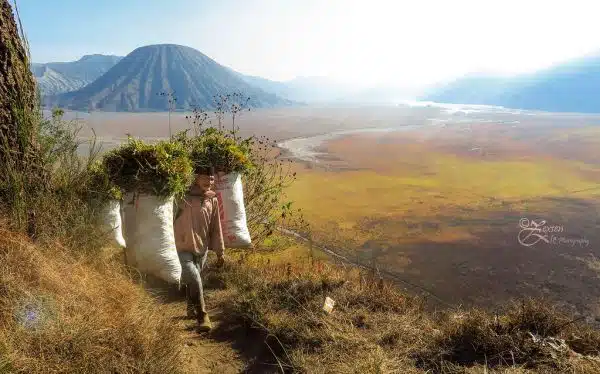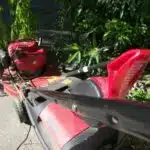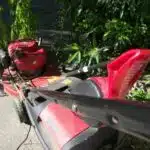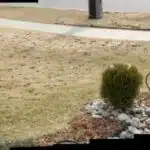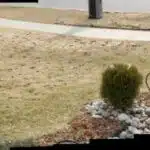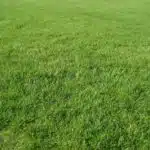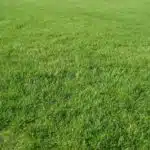Growing grass on slopes and hillsides can be a challenging task for many homeowners and landscapers. The inclination of the land poses several problems, including soil erosion, water runoff, and difficulty in mowing or maintaining the lawn. However, with proper planning and execution, it is possible to grow lush green grass on such terrains.
As a horticulture expert or landscaping specialist, one must understand the unique characteristics of sloped landscapes to choose the right type of grass seed, prepare the soil adequately, and ensure adequate drainage. Moreover, it is essential to employ effective erosion control measures to prevent soil loss during heavy rainfall events. In this article, we will explore some practical tips on how to grow grass on slopes and hillsides successfully. So let’s dive deeper into this subject and learn how you can create a beautiful lawn that not only enhances your property’s aesthetics but also serves the environment by preventing soil erosion and promoting ecological balance.
Assessing Soil Type And Condition
Soil is the foundation of any successful landscaping project, and growing grass on slopes and hillsides is no exception. Before starting the process, it’s crucial to assess the soil type and condition to ensure that it can support healthy grass growth. Soil testing should be your first step in this journey towards a lush lawn. A soil test will help you determine the pH level of the soil, its nutrient content, and any deficiencies that need to be addressed before planting.
Nutrient management is another essential factor in growing grass on slopes and hillsides. The right balance of nutrients is vital for healthy plant growth, so it’s essential to understand what your soil needs. Nutrient levels can be adjusted with fertilizers or compost, but only after the soil has been tested. Over-fertilizing can damage roots and encourage weed growth, so it’s crucial to follow recommended guidelines for application rates.
Keep in mind that different types of soil require different approaches to nutrient management. For example, sandy soils require more frequent applications of fertilizer due to their low nutrient retention capacity. In contrast, clay soils hold onto nutrients longer but are more susceptible to compaction issues. Understanding your specific soil type will help you develop a proper nutrient management plan tailored to your needs. By taking these steps before planting grass seed, you’ll ensure that your lawn has everything it needs to thrive in its new environment.
With a better understanding of your soil type and nutrient requirements, you’re ready to move on to choosing the right grass seed for your slope or hillside lawn.
Choosing The Right Grass Seed
When it comes to growing grass on slopes and hillsides, choosing the right grass seed is crucial. Overseeding techniques are especially important for these areas, as they allow for a more even distribution of seeds and can help prevent erosion. Seed blends and mixtures that are specifically designed for sloped terrain should be used, as they often contain species that have deep roots or are more tolerant to drought.
It’s important to consider the specific needs of your lawn when choosing a grass seed blend or mixture. For example, if you live in an area with a high level of foot traffic, you may want to choose a blend that contains species known for their durability. On the other hand, if you’re looking to create an ornamental lawn, you may want to choose a mixture that contains species known for their aesthetic appeal.
When overseeding your lawn on slopes and hillsides, it’s important to follow proper techniques in order to ensure success. This may include using a slit seeder or power rake to create furrows in the soil before seeding, as well as watering frequently during the germination period. By taking these steps and choosing the right seed blend or mixture for your specific needs, you can create a lush and healthy lawn on even the most challenging terrain.
Transition: Once you have chosen the right seed blend or mixture for your lawn on slopes and hillsides, the next step is preparing the soil for planting.
Preparing The Soil For Planting
- Testing soil nutrient levels is essential for successful grass growth on slopes and hillsides.
- The addition of organic matter to the soil can increase fertility, help retain moisture, and improve soil structure.
- Adjusting soil pH is important to ensure optimal nutrient availability and prevent nutrient deficiency.
- Compost, manure, and other organic sources can be used to add nutrients to the soil.
- To reduce soil acidity, lime can be applied to the soil in order to raise the pH.
- Regular soil testing is necessary to ensure the soil is in the right condition for planting and healthy grass growth.
Testing Soil Nutrients
The first step in growing grass on slopes and hillsides is to prepare the soil for planting. One crucial aspect of soil preparation is testing its nutrient content, particularly its pH level. Soil pH testing helps determine the acidity or alkalinity of the soil, which affects the availability of nutrients to plants. A pH range of 6.0 to 7.5 is ideal for most grass species, but some may require a specific range for optimal growth.
Aside from pH testing, diagnosing nutrient deficiencies in the soil is also essential before planting grass on slopes and hillsides. This process involves analyzing the levels of essential plant nutrients such as nitrogen, phosphorus, and potassium in the soil. Nutrient deficiency diagnosis enables gardeners or landscapers to identify any nutrient imbalances that could affect plant growth and health. Based on the results of these tests, appropriate fertilization methods can be applied to supplement any lacking nutrients.
In summary, preparing the soil for planting grass on slopes and hillsides requires a comprehensive understanding of its nutrient content through soil pH testing and nutrient deficiency diagnosis. These tests help ensure that the right conditions are established for healthy plant growth and an attractive lawn or landscape. With proper soil preparation techniques under your belt, you can create a thriving green space that will enhance your property’s value and appeal without compromising slope stability or erosion control measures.
Adding Organic Matter
In addition to testing soil pH and diagnosing nutrient deficiencies, adding organic matter to the soil is another crucial step in preparing it for planting grass on slopes and hillsides. Organic matter is composed of decomposed plant and animal materials, such as leaves, grass clippings, manure, and compost. Incorporating organic matter into the soil improves its structure, water holding capacity, and nutrient content.
Composting benefits are an excellent way to add organic matter to the soil. Composting involves collecting and breaking down organic waste into a dark, crumbly substance that can be used as a soil amendment. Compost contains vital nutrients that grass needs to grow healthy and strong. Adding compost to the soil also helps balance its pH level by neutralizing acidic or alkaline soils.
To add organic matter to the soil using composting benefits, gardeners or landscapers should spread a layer of compost over the topsoil before planting grass seeds. They can also mix compost with the topsoil using a tiller or cultivator machine for better distribution. It’s essential to follow recommended application rates when applying compost since too much can overwhelm the soil’s nutrient balance and cause more harm than good. With proper use of composting benefits in adding organic matter, we can create healthier soils that promote lush green spaces while protecting slope stability and erosion control measures.
Adjusting Soil Ph
In addition to adding organic matter, adjusting soil pH is another critical step in preparing the soil for planting grass on slopes and hillsides. Soil testing is necessary to determine the current pH level of the soil. The desired pH level for most grasses is between 6.0 and 7.0. If the soil is too acidic, lime application can be used to raise the pH level.
Lime application involves spreading a layer of lime over the topsoil before planting grass seeds. The amount of lime needed depends on the current pH level of the soil and the type of lime being used. It’s crucial to follow recommended application rates when applying lime since too much can make the soil too alkaline, which can also harm plant growth.
Adjusting soil pH using lime application helps improve nutrient availability, promotes healthy root growth, and enhances overall plant health. By ensuring that soils have an optimal pH range for plant growth, we enable them to absorb nutrients efficiently while preventing nutrient deficiencies or toxicities that may limit growth and development. Therefore, it’s essential to prioritize this step in preparing soils for planting grass on slopes and hillsides.
Implementing Effective Drainage Solutions
Rapid rainfall runoff is one of the biggest challenges when it comes to growing grass on slopes and hillsides. Rainwater management is crucial in this regard, as it helps to control the flow of water and prevent soil erosion. One effective solution is to create a series of small channels or swales that run across the slope, allowing water to infiltrate slowly into the soil.
Another option for managing rainwater is to install retaining walls along the slope. These walls help to hold back soil and prevent it from sliding down the hillside during heavy rains. This not only creates a stable surface for grass growth but also reduces erosion and maintains soil fertility. Retaining walls can be made from a variety of materials such as concrete, stone, or wood, depending on the budget and aesthetic preferences.
In summary, proper rainwater management is essential for growing grass on slopes and hillsides. Creating small channels or swales and installing retaining walls are effective solutions that can help prevent soil erosion and maintain soil fertility. In the next section, we will discuss installing erosion control measures that further enhance your landscaping efforts.
Installing Erosion Control Measures
Slope stabilization is essential when growing grass on slopes and hillsides. One of the most effective ways to stabilize a slope is by using erosion control measures. These measures help prevent soil erosion, which can lead to significant damage to the landscape. Some popular erosion control measures include installing retaining walls, using geotextiles, and planting vegetation.
Vegetative cover options are an excellent choice for erosion control measures. These plants not only help stabilize the slope but also improve the overall appearance of the landscape. Native grasses and wildflowers are a great option for vegetative cover as they are adapted to local climate conditions and require little maintenance once established. Another option is to use groundcovers such as creeping phlox or sedums that spread quickly and provide coverage.
To evoke emotion in the audience, consider these three bullet points:
- Protect your investment: Installing erosion control measures ensures that your lawn or garden stays in place.
- Preserve natural habitats: Vegetative cover options help maintain ecological balance by providing food and shelter for local wildlife.
- Enhance curb appeal: Using vegetation to stabilize slopes adds an attractive visual element to your property.
As you can see, installing erosion control measures and choosing appropriate vegetative cover options are crucial steps in ensuring that your grass grows successfully on slopes and hillsides. The next step is to learn about watering and fertilizing techniques that will keep your lawn healthy and lush year-round.
Watering And Fertilizing Techniques
Did you know that using traditional irrigation techniques, such as overhead sprinklers, can waste up to 50% of water due to evaporation and runoff? This is not only costly but also detrimental to the environment. That’s why smart irrigation systems are becoming increasingly popular for their ability to save water and money while maintaining healthy and lush lawns.
When it comes to fertilizing your grass on slopes and hillsides, it’s important to use organic options that won’t harm the surrounding ecosystem. Organic fertilizers are made from natural materials like compost, bone meal, and blood meal that slowly release nutrients into the soil over time. This helps promote strong root growth and prevents erosion by increasing soil structure.
Smart irrigation and organic fertilizers work hand in hand to create a sustainable lawn on slopes and hillsides. By using these techniques together, you can conserve water while providing essential nutrients for your grass to thrive. In the next section, we will discuss mowing and maintenance strategies that will help keep your lawn looking beautiful year-round.
Mowing And Maintenance Strategies
Watering and fertilizing techniques are crucial for growing healthy grass on slopes and hillsides, but mowing and maintenance strategies are equally important. Proper mowing practices help to keep the grass at an ideal height, which encourages lateral growth, thicker turf, and deeper roots. When it comes to maintaining steep hillsides, choosing the right equipment is essential. A self-propelled push mower or a string trimmer with a brush-cutter attachment can make the job easier and safer.
Mulching tips can also help with maintaining healthy grass on slopes and hillsides. Mulching helps to retain moisture in the soil, suppress weed growth, and provide nutrients to the grass over time. When mulching on a slope or hillside, use a lightweight mulch material such as straw or shredded leaves rather than heavier options like wood chips or gravel that could wash away during heavy rain.
Dealing with weeds and pests is another important aspect of maintaining healthy grass on slopes and hillsides. One way to prevent weeds from taking over is by using pre-emergent herbicides that target specific types of weeds before they germinate. For pests such as grubs or chinch bugs, applying insecticides at the right time of year can prevent damage to your lawn. Remember to always follow label instructions when using any chemicals on your lawn.
Transition: Now that we have covered proper mowing techniques, mulching tips, and dealing with weeds and pests, let’s move on to discussing erosion control measures for slopes and hillsides.
Dealing With Weeds And Pests
Weeds and pests can be a nuisance for those trying to grow grass on slopes or hillsides. However, with proper care and attention, it is possible to keep these unwanted visitors at bay. One natural remedy that has been known to work well is the use of vinegar. Simply mix vinegar with water and spray it on the affected areas. This will not only kill weeds but also deter pests from making their way onto your lawn.
For those who prefer chemical treatments, there are a variety of options available on the market. Herbicides such as glyphosate can be effective in killing weeds, but they should be used sparingly and with caution as they can also harm beneficial plants and insects. Insecticides such as pyrethroids can be used to control pests like ants and grubs, but again, they should be used carefully as they can also harm non-target organisms.
It is important to note that prevention is always better than cure when it comes to dealing with weeds and pests. Regular maintenance of your lawn including mowing, fertilizing, watering, and aerating can go a long way in preventing these issues from arising in the first place. Additionally, maintaining healthy soil through practices such as composting and avoiding overuse of chemicals can help create an environment that is less hospitable to weeds and pests.
Moving forward into troubleshooting common problems when growing grass on slopes or hillsides, one issue that may arise is erosion control.
Troubleshooting Common Problems
Now that we have discussed how to deal with weeds and pests, let’s move on to the topic of growing grass on slopes and hillsides. This can be a challenging task as these areas are prone to erosion and runoff, but with proper techniques, it can be done successfully.
The first step in preventing runoff is to choose the right type of grass. Grasses with deep root systems are best suited for slopes as they anchor the soil and absorb water effectively. It is also important to prepare the soil properly by loosening it with a garden fork or tiller and adding organic matter such as compost or aged manure. This will help retain moisture and provide nutrients for the grass.
Another challenge when growing grass on slopes is wildlife interference. Animals such as rabbits, deer, and groundhogs can damage the grass by eating it or digging holes in the soil. To prevent this, you can install physical barriers such as fencing or use natural repellents like predator urine or spicy sprays.
- Use native grass species that are adapted to your region’s climate
- Install erosion control measures such as retaining walls or terracing
- Water deeply but infrequently to encourage deep root growth
- Consider using ground covers or other low-maintenance landscaping features instead of grass in extremely steep areas
In conclusion, growing grass on slopes and hillsides requires careful planning and attention to detail. Preventing runoff and dealing with wildlife interference are two major challenges that must be addressed. By choosing the right type of grass, preparing the soil properly, installing physical barriers, and using natural repellents, you can successfully grow a lush green lawn on even the most challenging terrain.
Enhancing Aesthetics With Landscaping Features
According to a recent survey, over 90% of homeowners prioritize having a beautiful outdoor space. Landscaping features are one way to enhance the aesthetics of your property and create an inviting atmosphere for your guests. Creative designs and sustainable options are available to help achieve your landscaping goals while also being eco-friendly.
One popular landscaping feature is the use of retaining walls. Retaining walls not only add visual interest but also serve a functional purpose by preventing soil erosion on slopes and hillsides. These walls can be made from various materials such as stone or concrete, and can be designed in different shapes and sizes to fit the surrounding landscape.
Another sustainable option for enhancing aesthetics is the use of native plants in your landscaping design. Native plants require less water and maintenance than non-native species, making them ideal for hillside planting where irrigation may be limited. Additionally, native plants provide essential habitat for local wildlife, contributing to the overall health of your ecosystem.
Incorporating creative designs and sustainable options into your landscaping plan will not only improve the aesthetics of your outdoor space but also contribute to a healthier environment. Consider consulting with a horticulture expert or landscaping specialist to find out more about how you can incorporate these features into your own property without sacrificing functionality or style.
Conclusion
Growing grass on slopes and hillsides can be a challenging task, but with proper planning and implementation of effective strategies, it can be achieved successfully. Assessing the soil type and condition is the first step in determining the right approach to take. Choosing the right grass seed, preparing the soil for planting, implementing effective drainage solutions, installing erosion control measures, mowing and maintenance strategies, dealing with weeds and pests, troubleshooting common problems, and enhancing aesthetics with landscaping features are all crucial aspects to consider.
It is important to note that one anticipated objection may be related to the cost of some of these strategies. However, it is essential to understand that investing in quality materials and professional services will not only save money in the long run but will also provide a safe and sustainable environment for years to come. As horticulture experts or landscaping specialists, it is our responsibility to ensure that we provide our clients with the best possible solutions for their needs while keeping environmental factors in mind. By following these guidelines and addressing potential objections head-on, we can help our clients achieve their desired results while maintaining a healthy ecosystem.
Image Credits

